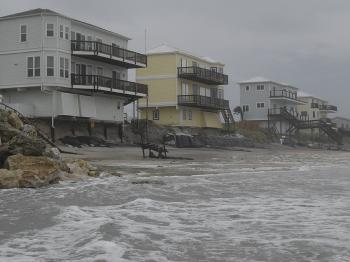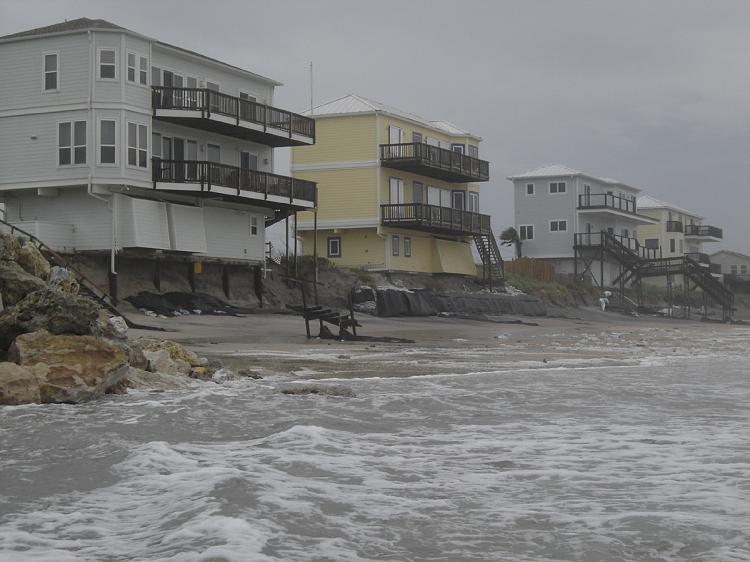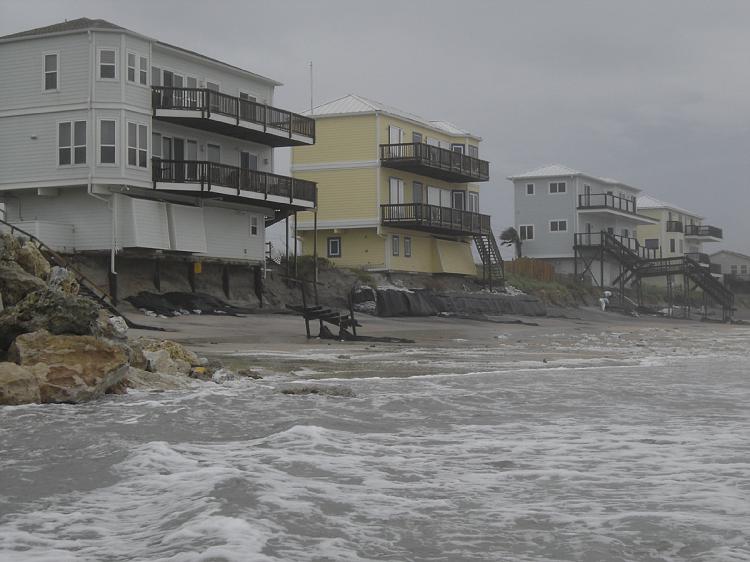Creeping in at 5 mph, Tropical Storm Fay hit Saint Augustine in full force today, dumping heavy rains on America’s oldest city, and whipping up sustained winds of 40mph with gusts clocking in over 56 mph, according to a National Weather Service report.
Vilano Beach, just north of Saint Augustine, took a major beating from Fay, leaving at least three homes dangling over the edge of the storm-eroded beach.
Further north in Jacksonville, some streets on the west side of the city were completely flooded, and cars were reportedly under water. In addition, at least two tornados were sighted in Jacksonville and outlying areas.
As of 3 p.m., 10,000 homes in northeast Florida were without power, about 6,000 of which were in St. Johns County, where Saint Augustine is located.
Tropical storm and flood warnings remain in effect along the northeast coast of Florida. Gale warnings also remain in effect along the southeastern seaboard while the severe weather extends into southeast Georgia, and up into South Carolina.
Fay is expected to continue its long track west over Florida during the weekend toward the Florida Panhandle.




Friends Read Free